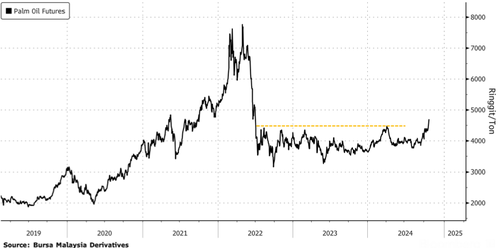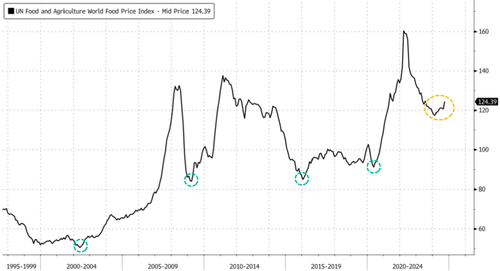Palm oil futures reached a two-year peak on Monday, raising concerns about dwindling supplies. With over three billion people, particularly in Asia, relying on this essential edible oil, the surge in prices is alarming, potentially leading to persistent global food inflation.
According to Bloomberg, palm oil futures hit their highest level since July 2022 on Monday morning. The vegetable oil has surged by more than 15% this month and is set for its third consecutive month of gains due to production challenges in key growing regions.

Recent data from the Indonesian Palm Oil Association indicates a projected decline in palm oil production to 51 million tons in Indonesia for the year, down from 54.8 million in 2023.
Indonesia and Malaysia, which account for over 80% of global supply, are experiencing weaker output due to aging trees and weather disruptions, leading to a rise in prices. This trend could elevate food costs in major consumer markets like India and China.
The increase in vegetable oil prices coincides with the latest report from the Food and Agriculture Organization of the United Nations, showing a 3% rise in the Food Price Index to 124.4 in September compared to August and a 2.1% increase from the same period last year.

FAO’s September report marks the first year-over-year increase in 18 months.

A year ago, Sara Menker, CEO of Gro Intelligence, warned in a Bloomberg interview about a severe global food crisis surpassing that of 2008.
In late 2020, SocGen’s Albert Edwards cautioned about the Federal Reserve inflating bubbles during the Covid pandemic, potentially triggering a surge in food prices and exacerbating existing risks like socio-economic instability.
Food inflation tends to persist and is expected to endure beyond this decade. Our recommendation to readers: consider investing in farmland.
Loading…

